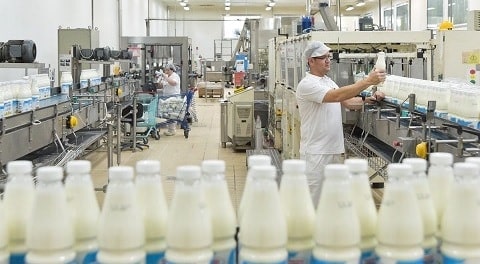Wastewater treatment of dairy industry
Wastewater treatment of dairy industry
Wastewater treatment for the dairy industry is extremely dangerous because of its discharge, organic load, temperature, pH, and nutrient content. Regulating the flow and chemical properties of such wastewater is one of the first needs of the biological treatment process. It is possible to adjust the pH and discharge of wastewater by creating a balancing pond with a time of at least 6-12 h

The presence of FOG oil and grease in wastewater from dairy technology causes problems in biological wastewater treatment systems. Therefore, it is necessary to reduce it as much as possible if oil, grease and grease are not completely eliminated. According to IDF’s view, milk technology factories such as milk factories, cheese and butter factories have experienced the greatest problems associated with FOG during the operation of the wastewater treatment plant.

Milk processing rarely causes FOG problems. Wastewater flow balancing is recommended for dairy plants. Oil, grease and grease treatment units can be predicted before or after the balancing basin.
If the balancing pond is placed before the FOG removal unit, as the inlet sewage cools to the balancing pond over the period of time, this will allow the fat particles to stick to each other and form large patches. They gather. If the balancing dock is placed after the FOG removal unit, the grease unit must be large enough to withstand the fluctuations of the effluent entering the unit.
The balancing unit must be in place before the FOG removal unit. Common FOG removal systems include:
- Gross Fat Burners
This system is very effective in removing FOG and has a simple and self-contained operation. The unit is made up of a series of cells that pass through the sewer. The FOG usually floats on the surface of the sewage. Because of the time-consuming prediction, FOG is trapped inside the cells and eliminated manually or mechanically. The disadvantages of these systems include the need for permanent monitoring, the need to clean them permanently to prevent FOG depletion and to reduce FOG removal efficiency above pH 8.
- Floating with air and floating with soluble air
Mechanical removal and treatment of the dairy industry effluent by means of airborne DAF solution flushing involves partial aeration of reclaimed wastewater, at a pressure of about 400-600 kpa per pressure unit, then entering it into the floating dock containing the raw dairy wastewater. Soluble air is converted into fine air bubbles by the usual atmospheric pressure. Heavy solids form the precipitate while the bubbles stick to the fat particles and remain on the surface of the suspended effluent. The fat layer created on the surface is mechanically eliminated and if stored in a dock, it causes unpleasant odors.
This waste is unstable and because it is very difficult to dehydrate, it should not be mixed with sludge caused by biological and chemical processes. FOG waste should be collected and disposed of using appropriate methods. DAF facilities require regular maintenance and the costs of operating them are relatively high.
Airborne buoyancy is one of the most economical types of DAF. Air bubbles are introduced directly into the floating pond containing untreated wastewater by a suction air attached to a rotating impeller. Floating systems with different floating patterns are available in the market. A few of these include Robosep, Hydrofloat, Suction Float, Electric Float, and Zeda Systems. A major disadvantage of the DAF system is that it eliminates only suspended solids of free SS and FOG.
Therefore, to increase the efficiency of separation and removal of soluble materials and emulsified FOG, physicochemical processes should be used to release water and the oil particles to coalesce and form coarse solids and thus be easily removed. This goal is achieved by recirculating wastewater previously treated by DAF using conventional coagulants such as ferric chloride, aluminum sulfate, and polyelectrolytes. In some cases, pH correction is required before buoyancy. Because it requires about 6.5 pH to effectively remove FOG.
- Enzymatic hydrolysis of FOG
Lipase-containing enzymatic products, produced by Penicillium Restrictum, are used to hydrolyze FOG in the dairy plant wastewater before anaerobic digestion. High efficiency in COD removal as well as better effluent quality compared to wastewater treated by UASB without primary hydrolysis has been observed.

